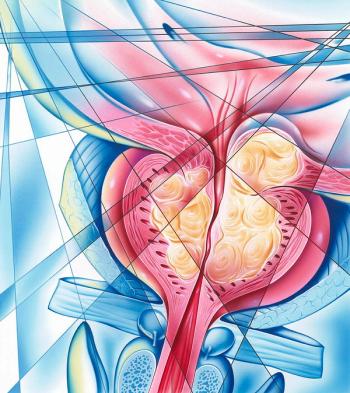
- ONCOLOGY Vol 11 No 11
- Volume 11
- Issue 11
Tobacco Tax Initiative-Oregon, 1996
In 1995, tobacco use contributed to the deaths of 6,274 persons in Oregon (1995 population, 3,132,000) as reported by
In 1995, tobacco use contributed to the deaths of 6,274 persons in Oregon (1995 population, 3,132,000) as reported by physicians on death certificates; annual costs in Oregon for the direct and indirect consequences of tobacco use were approximately $1 billion (State Health Division, Oregon Department of Human Resources, unpublished data, 1997). In response to the health burden associated with tobacco use in Oregon, in late 1995 a statewide coalition of health-care and tobacco-use prevention interests began a petition-driven citizen initiative, Measure 44, to increase the tax on each pack of cigarettes from 38¢ to 68¢ and the tax on noncigarette tobacco products from 35% to 65% of wholesale price beginning February 1, 1997. This report presents findings of surveys conducted before and after the measure was approved by voters; in both surveys, respondents indicated that support for such an initiative was increased by dedicating a portion of the new revenue to tobacco-use prevention and education and to expanded insurance coverage under the Oregon Health Plan (OHP) for medically underserved persons.
The measure presented to voters on November 5, 1996, authorized 10% of the new tobacco tax revenue to be used to develop and implement statewide tobacco-use prevention and education programs managed by the State Health Division, Oregon Department of Human Resources, and 90% to be used to expand health-care coverage under the OHP. The initiative was approved by 56% to 44%. The coalition of health-care and tobacco-use prevention interests reported spending $650,000 to promote the initiative, compared with $4.8 million spent almost exclusively by the tobacco industry to oppose the initiative. Voter turnout was 71%, similar to turnouts in previous presidential election years; 97% of those voting cast a vote on this issue.
Pre-Election Survey
From September 18 through October 11, 1994, a population-based, random-digit-dialed telephone survey of persons aged ³ 18 years in Oregon was conducted on tobacco excise tax policies. Respondents were asked about increasing the state tobacco excise tax with the revenue to be used to help pay for:
- a greater share of the OHP;
- programs to reduce or prevent smoking;
- other health programs in addition to those aimed at reducing or preventing cigarette smoking; and
- any government purpose, not just health, health insurance, or smoking prevention.
Respondents were asked whether they currently smoke every day or some days and whether they use pipes or cigars, chew tobacco, or use snuff regularly. Persons who currently used any tobacco product were classified as tobacco users. Of the 1,538 telephone numbers in the sample, 813 households were contacted; one person age ³ 18 years was randomly selected in each household for interview. A total of 631 sampled telephone numbers were excluded because they were not residences or were not in service; residential status could not be determined for 94. Completed surveys were obtained from 594 households (73%).
Overall, 68% of respondents favored an increase in tobacco taxes, including 76% of respondents who reported no current tobacco use and 44% of respondents who reported current tobacco use. However, 89% of respondents favored an increase if the funds were used for the OHP; 67% if the funds were used for tobacco-use prevention; 67% if the funds were used for other health programs; and 20% if the funds were added to state general funds.
Post-Election Survey
A 1996 post-election survey of Oregon households was conducted by the Program for Governmental Research and Education of Oregon State University to assess reasons respondents voted on items on the ballot, including Measure 44. Completed surveys were obtained from 699 (51%) of 1,370 households.
Overall, 61% of respondents reported voting for the measure, and 38% reported voting against it. Reasons cited by voters who supported the initiative were consistent with goals promoted by the coalition supporting the initiative: the primary reason for 66% was to discourage tobacco consumption, and for 27%, to expand the health plan. Of respondents voting against the initiative, 47% reported that the primary reason was tobacco users should not be forced to pay a disproportionate share of health costs, and 36% reported that it would lead to wasteful spending by the government; both issues were emphasized in the No on 44 campaign.
Editorial Note from the CDC
The findings in this report suggest that, in Oregon, support for the increase in tobacco excise taxes was increased by explicit dedication of new revenue from the tax for both a new statewide tobacco-use prevention and education program and expanded insurance coverage under the OHP. Oregon is the fourth state since 1988 to pass a citizen initiative to raise tobacco taxes and dedicate a portion of the new tax revenue to prevention and education programs; others were California (in 1988), Massachusetts (1992), and Arizona (1994). Similar initiatives failed in Montana (1990) and Colorado (1992). Michigan passed a citizen initiative to increase the tobacco excise tax from 25¢ to 50¢ in March 1994 as part of a multifaceted ballot initiative to replace property tax funding of schools with other taxes. In 34 other states since 1988, legislatures have increased tobacco excise taxes (eg, Washington [from 56.5¢ to 81.5¢ in 1994]). Data from the surveys described in this report suggest that a desire to reduce tobacco use was prevalent among adults before the election and was a primary factor considered by voters. As in other states (eg, Michigan), the dedication of funds to a public service objective (eg, expanding the OHP) was viewed positively.
Although increasing excise taxes on cigarettes has been suggested as one of the most cost-effective short-term strategies to reduce tobacco consumption among adults and prevent youth initiation of tobacco use, a tax increase combined with an antismoking campaign can be more effective in sustaining the reduction in per capita consumption than a tax increase alone. With the implementation of a state-wide program, both California and Massachusetts have sustained greater declines in per capita tobacco use than the rest of the nation; from 1992 through 1996, per capita consumption declined 19.7% in Massachusetts and 15.8% in California but only 6.1% in the remaining 48 states and the District of Columbia combined. Although youth smoking rates have increased in both states, recent analyses suggest that the rates would have increased more rapidly in the absence of the excise tax increases and tobacco-control programs.
The State Health Division, with technical assistance from CDC, is developing and implementing a comprehensive tobacco-use prevention and education program incorporating components that have been effective in past research and other state-wide demonstration efforts. Based on projections for 1997 through 1998, the program will receive approximately $17 million per biennium.
Adapted from Morbidity and Mortality Weekly Report 46(11):246-248, 1997.
Articles in this issue
about 28 years ago
Daniplestim May Increase Peripheral Blood Stem-Cell Harvestsabout 28 years ago
Childhood Cancers-Positives and Negatives in Europeabout 28 years ago
Update: Trends in AIDS Incidence in the United Statesabout 28 years ago
New Treatment for Patients With Advanced Breast Cancerabout 28 years ago
Prostate Cancer Treatment in Europeabout 28 years ago
Genetic Changes May Persist in Former Smokersabout 28 years ago
A New Tool in the Study of Cancerabout 28 years ago
Clinical Status and Optimal Use of New Therapeutic Agentsabout 28 years ago
Olive Garden Raises $2 Million for Leukemia Societyabout 28 years ago
Advances Made, Challenges Remain in Fight Against CancerNewsletter
Stay up to date on recent advances in the multidisciplinary approach to cancer.


















































































